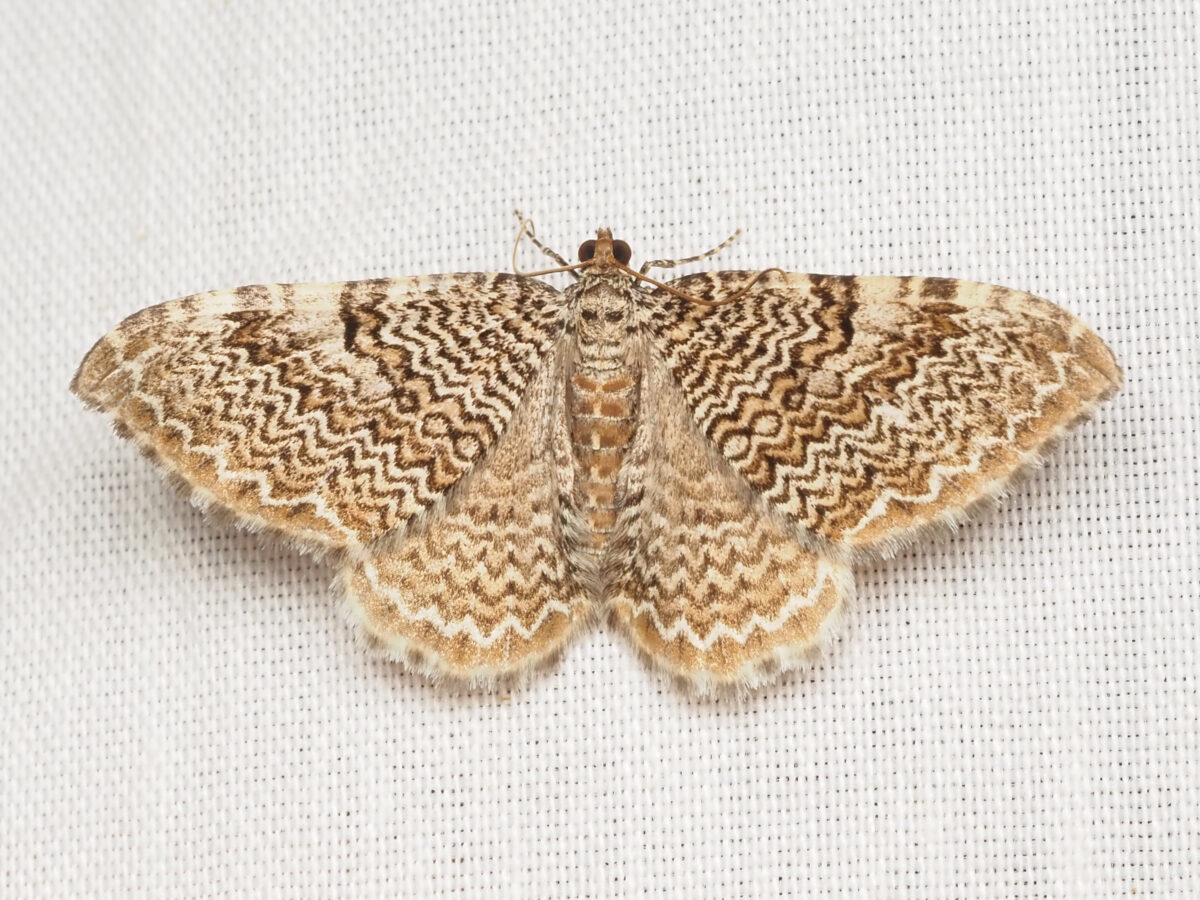4 natural treasures Alabama has protected through the Forever Wild Program
Reading time: 11 minutes
Sponsored

In November 1992, the Forever Wild Constitutional Amendment was approved by an 84% statewide vote,a national record for a conservation ballot measure at that time. Twenty years later, in 2012, when the Forever Wild amendment was re-authorized by referendum, an overwhelming 76% of Alabamians voted to continue the successful program.
During the campaign in 2012, one of the rare criticisms about the Forever Wild Program was the public’s lack of information about the success of the program. To put it frankly, Forever Wild spent little time “tooting its own horn.”
In this, our second installment in a three part series about Forever Wild, we are going to examine four natural treasures the program has protected over the past 26 years.
How to choose?

In choosing the four natural treasures, our biggest question was where to start? Over the past 26 years, Forever Wild has protected over 266,000 acres statewide through the acquisition of 160 tracts of land.
Simply put, the program has transformed conservation in Alabama.
It has expanded wildlife management areas and state parks; created nature preserves, canoe and hiking trails and protected sources for drinking water and biodiversity. There are literally countless special places we could highlight.
This short list is just a taste of what this extraordinary program has accomplished on the local, national and global scale.
Paint Rock – One of the most biodiverse places in North America

When you talk to Bill Finch, author and longtime conservationist, about the Paint Rock watershed, located primarily in Northeast Alabama’s Jackson County, and home to the Walls of Jericho, the superlatives mount up.
Through Forever Wild’s leadership, 25,194 acres out of more than 75,000 acres of public and private conservation lands have been protected in Tennessee and Alabama at this global hotspot of biodiversity.
How important is Paint Rock to the world? Here are a few of Finch’s descriptions about Paint Rock:
Aquatic diversity

“Aquatic diversity in the Paint Rock river system? There are species that exist nowhere else, that are lost to the world, that still exist here in Paint Rock. There are literally dozens of rare, threatened and endangered species in the Paint Rock valley, from mussels and fish to rare flowers and trees to bats and other cave life. The river supports about 50 species of mussels and some 100 species of fish — extraordinary for a river of its size.”
Finch added, “The last wild populations of two mussels, the pale liliput and the Alabama lampmussel, are found only in Paint Rock River. Paint Rock is also one of only two locations for the rare fish called the palezone shiner, and is home to the only remaining Alabama population of the endangered snail darter.”
Paint Rock’s forests
“The Paint Rock forest is the center of deciduous forest diversity in North America. It is probably one of the richest forests in the world. There have been some temperate forests in China that were richer, but they are all mostly gone now. It may be one of the world’s great centers of tree diversity.”
Walls of Jericho

“If not for Forever Wild , no one would be able to see the Walls of Jericho which is one of the most spectacular places in the world. It is like the cliffs have become architecture. Yes, Forever Wild preserved the forests, that is very important, but it gave people the opportunity to see one of the most beautiful places in the world. It gave Alabamians a chance to see what really makes their places special.”
Cave life

“Jackson County has more cave life than anywhere else in North America. More life than Missouri or New Mexico. There is a whole world that runs through those caves,” Finch concluded.
Paint Rock is attracting scientists from the Smithsonian, Harvard, UCLA and throughout the world because it’s patchwork of soils represent pieces of eastern North America on a small scale. According to Finch, almost every forest type you encounter along the Appalachian Mountain chain, up to New England is in the Paint Rock.
Simply stated. There is no place like Paint Rock on earth.
Coldwater Mountain – A mecca for mountain biking

Nearly twenty years ago, when the Forever Wild Board of Trustees considered purchasing Coldwater Mountain near Anniston, Alabama, the primary reason they were interested in the property was because the land protects Coldwater Spring, a major source of drinking water for Anniston and the surrounding municipalities. It is also home to the Pygmy sculpin, a rare fish that only lives in that spring.
Two decades later, after a community wide effort, the 4,183 acres of mountainous pine-hardwood forest has become a mecca for mountain biking. According to Tom Nelson, President of the Northeast Alabama Bicycle Association (NEABA), volunteers and trail building professionals constructed a 35 mile bike trail system on Coldwater Mountain that has been designated a Bronze-Level International Mountain Bike Association (IMBA) Ride Center.

How significant is that honor?
Globally, there are only 40 Ride Centers, including destinations in New Zealand, Utah and Virginia.
What also makes Coldwater Mountain unique for mountain bikers is the presence of two very different landscapes that are found on the mountain.
“The south facing slope of the mountain is a fire ecosystem dominated by pines and rocky soil. The north slope is a deciduous forest ecosystem,” said Nelson.
Coldwater Mountain, Alabama | 2013 from IMBA on Vimeo
Located just 60 miles from Birmingham and 90 miles from Atlanta off Interstate 20, the world class trail is strategically positioned less than an hour and a half from 6 million people. Mountain biking is one of the fastest growing outdoor activities in the nation.
Each year, local mountain bike trail advocates intend to capture converts to the sport through their annual Annual Coldwater Mountain Fat Tire Festival in the fall. They also have plans to nearly double the Coldwater Mountain trail system to 65 miles in the coming years.
Ruffner Mountain – Birmingham’s Central Park

Next time you see New York City’s Central Park on a news program or television sitcom with friends who live outside Birmingham or out of state, remind them that Birmingham’s Ruffner Mountain at 1042 acres is larger than Central Park’s 843 acres.
More than 15 years ago, Forever Wild added about 250 acres to Ruffner Mountain. Carlee Sanford, Ruffner’s Executive Director, said the Forever Wild program expanded their “island of forest.”

“Expanding Ruffner was part of the initial plan back in the 70s when we first created Ruffner in 1977. We wanted to create this wildlife sanctuary,” she said.
“The Forever Wild land increased the island of forest here which in turn increased our biodiversity. It provides over 250 acres of protected habitat. Without Forever Wild, these areas would be on the brink of being developed. Instead, we have natural habitat that connects our communities to nature,” Sanford added.
Connecting to neighborhoods and the Birmingham community as a whole is what makes Ruffner special. Ruffner’s impact is impressive. Currently, the nature preserve receives over 100,000 visitors a year. They provide over 80 educational programs free of charge each year to nearly 2800 youth, adult and seniors. In 2017, they hosted 2921 students from 39 schools and organizations on field trips. They have 116 volunteers.

In the Magic City people describe Ruffner as an natural oasis, refuge, island of forest. Because of Forever Wild, the entire state can call it home.
Grand Bay Savanna – Our last remaining natural coastal marsh on the Gulf Coast

As described in our first installment about the founding of Forever Wild, when the program was created it birthed what many of the advocates in the 90s called the “spirit of Forever Wild.”
Partnerships have been the secret to Forever Wild’s success. One of the best examples has been the relationship between the Nature Conservancy in Alabama and the Alabama Department of Conservation and Natural Resources and their decades-long effort to conserve and restore Alabama’s coast at Grand Bay Savanna in Mobile County.
“These lands are becoming destinations, iconic landscapes for the public to enjoy,” said Roger Mangham, Director of the Nature Conservancy in Alabama. “ You can fish, hunt, paddle, and go birding in some of the last remaining natural-coastal marsh on the entire Gulf coast at Grand Bay Savanna. Most of these places across the Gulf have all but completely vanished.”

People are beginning to appreciate how important these undisturbed forest and marshes are.
The marshes provide essential food and cover for more than 90 percent of marine fishes in Alabama coastal waters according to the Alabama DCNR. Areas like Grand Bay Savanna are critical hatching and rearing groups for shrimp, crabs, oysters and fish.

“Forever Wild, in partnership with TNC, has been managing these lands, restoring it with fire,” stated Bill Finch. “It is more pleasant to go to Grand Bay since Forever Wild took it over. 30 years ago, thick woods, that were unnatural because of fire suppression, have now been opened up, and the beautiful savannas have been restored. It is an enchanted place that is stunningly beautiful.”
Forever Wild is nearby
These are just four significant Forever Wild tracts out of 160. As explained earlier, Forever Wild impacts the lives of Alabamians daily. In many cases, you may not even know it.

Visit https://alabamaforeverwild.com/forever-wild-tract-list to get information on all the Forever Wild Tracts.

Just within a seventy mile radius of Birmingham, in addition to Ruffner Mountain and Coldwater Mountain, Forever Wild has accomplished the following conservation projects:
- Expanded Tannehill State Historical Park in West Jefferson County.
- Helped establish Cahaba River Park, which provides access to the Cahaba lilies.
- Protected Turkey Creek in North Jefferson county, which is one of the state’s most popular swimming holes.
- Increased the William R. Ireland Cahaba Wildlife Management Area, which provides public hunting only an hour from downtown Birmingham.

Despite it’s overwhelming popularity at the ballot box and the many beneficial ways it has transformed conservation locally, nationally and globally in Alabama, Forever Wild has been under attack numerous times in the Alabama legislature since its re-authorization just six years ago.
In our next installment, we are going to examine ways Alabamians can protect the most successful conservation program in the state’s nearly 200 year history.

![Inside look at the new The Toasted Yolk in downtown Birmingham [PHOTOS + VIDEO] Inside look at the new The Toasted Yolk in downtown Birmingham [PHOTOS + VIDEO]](https://i0.wp.com/bhamnow.com/wp-content/uploads/2025/07/IMG_3003-scaled-e1752264981924.jpeg?fit=768%2C402&quality=89&ssl=1)

